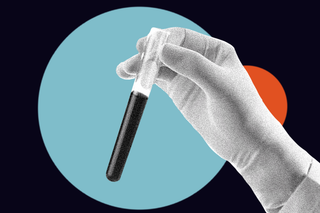
40 Studies Found Presence of Toxic ‘Forever Chemicals’ in Umbilical Cord Blood
The studies collectively looked at 30,000 samples of umbilical cord blood. All of them were found to contain toxic PFAS.

Forever chemicals are now entering human bodies even before their birth. A recent review of forty different peer-reviewed studies, conducted by American activist and advocacy organization Environmental Working Group (EWG), has found the presence of Per and Polyfluroalkyl Substances (PFAS) — better known as “forever chemicals” — in umbilical cord blood samples. The findings of the review highlight a looming, delicate public health crisis that needs to be treated with urgency.
PFAS may travel to fetuses through the umbilical cord, and to infants through breastfeeding. They’re also nearly inescapable — they can enter human bodies through skin contact, ingestion, or inhalation as they move around the atmosphere.
This is hardly surprising, as PFAS have been ubiquitous in human lives since the 1940s. They are called ‘forever chemicals’ because they are difficult to degrade and continue to persist long after the objects they were used in are discarded. These include cookware resistant to oil, heat, and water; firefighting foam; cosmetics; paints and coatings; waterproof clothing; and objects in the electronics industry. PFAS have also been found to occur at alarming levels in meat and fish products. Last month, The Swaddle reported about the presence of forever chemicals in rainwater, with their ubiquity breaching even remote, inaccessible areas with low PFAS use such as the Tibetan Plateau. The report also noted how PFAS molecules are present in the soil and the sea, thus making humans susceptible to PFAS exposure in every avenue of their lives.
The current review considered studies across 12 countries — that includes Brazil, China, Japan, and the US, among others — published in peer-reviewed journals over the last five years. All the studies reported the presence of PFAS in human blood, with several of them displaying associations between PFAS presence in umbilical cord blood and changes in cord blood lipids — key body molecules in newborn babies that can determine the character of metabolic functions in a person. Some studies also highlighted associations between PFAS in cord blood and harm to the development of the fetus. A few studies reported associations between the detection of PFAS in cord blood — or in later childhood — and increased health risks in adulthood.
Related on The Swaddle:
What You Need to Know About the Chemicals We’re Exposed to Every Day and Ingest Without Realizing
Terming the findings of the study “disturbing”, Dr. Uloma Uche, Environmental Science Fellow at EWG, told The Guardian that their research indicates that “even before you’ve come into the world, you’re already exposed to PFAS.” The Centers for Disease Control and Prevention (CDC), United States of America identifies increased cholesterol levels, changes in liver enzymes, and increased risk of kidney and testicular cancers as some of the potential health risks of high exposure to PFAS. Among infants and children, the CDC states, exposure to PFAS may result in decreased vaccine efficiency and decreases in infant birth weights.
“The presence of these chemicals is also a threat to pregnant people, serving as first contacts with PFAS before they can pass from the uterus to the developing fetus by way of the umbilical cord, Pregnant women may face an increased risk of high blood pressure,” Dr. Uche added to her response to The Guardian. The CDC states that pregnant women may particularly face an increased risk of high blood pressure during pregnancy. The results of the study, then, highlight that humans face a massive, two-pronged, public health crisis with no clear solutions to mitigate it.
Dr. Uche highlights the presence of PFAS in newborn babies as particularly worrying. They are “more vulnerable to these exposures because their developing bodies don’t have the mechanisms to deal with the chemicals”, she told The Guardian.
Scientists are still searching for ways to reduce the presence of PFAS in the human body. Earlier this year, Rohitha Naraharisetty for The Swaddle reported about a study that explored regular blood donations as a possible method to reduce PFAS levels in the human body. However, there is still a need for more regular tests before this becomes a widespread, regular option for reducing their intake. But blood donation cannot be a viable option for fetuses, infants, or children.
A more recent breakthrough found that a soap and solvent mixture can destroy forever chemicals. This could possible get rid of them in soil and water; but it only destroys some PFAS.Experts highlight that this calls for better regulations around PFAS that discourage industries from manufacturing more PFAS-based products. They emphasize that authorities must act with a sense of urgency of the situation.
Amlan Sarkar is a staff writer at TheSwaddle. He writes about the intersection between pop culture and politics. You can reach him on Instagram @amlansarkr.
Related


Maternal Complications, Suicide Among Top Reasons For Sex Workers’ Deaths: Study
